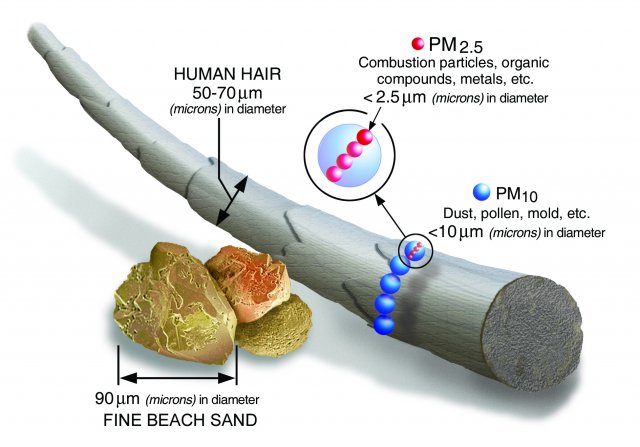The Data and Project Development is led by
RiSE for Environmental Health & Justice (RiSE4EJ)
and Science and Community Action Network (SciCAN)
Real-Time Interactive Visual Maps
Additional Maps
RMP Facilities
The Risk Management Program (RMP) rule requires facilities that use extremely hazardous substances to develop a Risk Management Plan. Full map found here.
Chemical Incident Tracker
The Coalition to Prevent Chemical Disasters has been tracking incidents involving hazardous chemicals since January 2021, sourced from media reports.
Get Involved with Street Science
Environmental Health Literacy
Embrace experiential knowledge by applying real-life experience to what they've learned to real-world situations. An introduction to public health and data analytics facilitates confidence in their ability to conduct research, community science, and advocate for effective and innovative solutions.
Street Science Institute
Other opportunities are available to program alumni that are hosting an air monitor, making public comments, and continuing community-based research, including learning modules to attain a GIS certification, which spark imagination, creativity, and access to tools to support youth-led health-centered research.
RiSE
Our team’s vision is that through this place-based approach and collaboration with local educators and local leaders, we will continue to build just relationships between community residents and other stakeholders and to utilize a mixed-method research approach, to protect our children, families, and public health.
Frequently Asked Questions (FAQ)
1. What is Street Science Air Monitoring?
Street Science is a hyperlocal community owned network of air monitors. These monitors measure current levels of particulate matter air pollution (PM2.5 and PM10). The air quality measurements are displayed on this website. This network was developed in response to the community residents’ concerns about air quality and their desire for neighborhood-level data.
2. How is Street Science Air Monitoring different from government networks?
Air monitors operated by regulatory government agencies are used to measure ambient air quality levels to see if pollution levels meet federal and state air quality standards. Our network measures hyperlocal real time air pollution levels.
3. How were community members engaged in setting up this network?
Our network was designed through environmental health leadership development. RiSE4EJ is an environmental health and justice community-based organization with expertise in air pollution, research and policy development, public health and community engagement.
4. Who is responsible for this network?
RiSE4EJ is responsible for this network. Email us at ( info@rise4ej.org.) or call 913-608-9266
5. How is Street Science related to RiSE4EJ?
Street Science is managed and maintained by RiSE4EJ, and can leverage infrastructure developed for the Street Science network to display hyperlocal air monitoring data, learn more about the Street Science Institute by emailing info@rise4ej.org.
6. How do I find air quality information on this website?
This website provides visualizations that transform raw data into a format that is easier for the human brain to process, making complex information visually accessible and actionable. Explore this brief tutorial to learn more. The data on this website are automatically reported from the monitors and have not been verified or validated, so should be considered preliminary and used with discretion.
7. Can I get the raw data from the monitors?
For data requests, please email us at info@rise4ej.org with a detailed description, data you would like, and how you plan to use it. For more information, please see External Requests.
Emailing the same request to all of our team will not produce a faster internal process on our end. All external requests must be submitted to info@rise4ej.org who will reply with screening questions. This also applies to potential grant funding, speaking engagements, long range planning efforts, public health partnerships, etc.
8. What do we do with this information?
- Learn about the current air quality at one of the many monitor locations
- Examine how pollution varies within the neighborhood
- Education
- Environmental Stewardship
- Awareness
- Personal Exposure Monitoring
Data from Street Science Air Monitoring can be used in a variety of ways, including
9. Real Time Hyperlocal Information vs Reference Method or Reference Equivalent?
Real-time air monitoring assessments have significant benefits, including the ability to identify pollution sources in your neighborhood, respond and inform the public about potential health risks, and support evidence-based decision-making. The Street Science updates the air monitor information every 15 minutes and provides hyperlocal data, which cannot be measured by the Federal Reference or Equivalent Methods.
Federal Reference Monitors or Federal Equivalent Monitors provide ambient air pollution information and do not capture exceptional events and the data collection varies from continuous readings and or sampling filters every third or sixth day, and or average the data over a 24 hour period.
Please see below to learn more AQI: AQI: A Guide to Air Quality and Your Health
Additional information

Information on PM2.5
PM stands for particulate matter (also called particle pollution): the term for a mixture of solid particles and liquid droplets found in the air. Some particles, such as dust, dirt, soot, or smoke, are large or dark enough to be seen with the naked eye. Others are so small they can only be detected using an electron microscope.
Connect with us
Environmental Health Literacy and Environmental Health Hazards workshops, trainings all through a community analysis, and engaging with the community. Visit our Environmental Health Resource Library or contact us at 913-608-9266.
Request Data
Please send an email to info@rise4ej.org.

 ,
,


